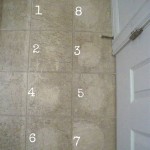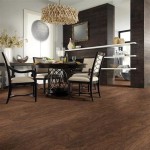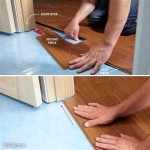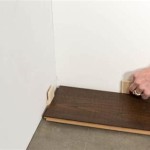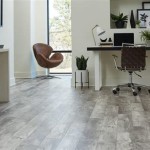Bellawood Prefinished Hardwood Flooring: An In-Depth Look
Bellawood prefinished hardwood flooring represents a significant segment of the hardwood flooring market. It is characterized by its factory-applied finish, offering durability and a wide range of aesthetic options. This article provides a detailed examination of Bellawood prefinished hardwood flooring, covering its construction, advantages, disadvantages, installation considerations, maintenance, and cost implications.
Hardwood flooring, in general, is a popular choice for residential and commercial spaces due to its natural beauty, durability, and potential to increase property value. Unlike unfinished hardwood, which requires sanding, staining, and sealing after installation, prefinished hardwood arrives ready to install, saving time and labor costs. Bellawood, as a brand, provides a broad selection of prefinished hardwood options, catering to diverse design preferences and budgetary constraints.
The term "prefinished" refers to the multiple coats of protective finish applied to the hardwood planks at the factory. This process utilizes advanced techniques and specialized equipment to ensure a consistent and durable coating. The finishes typically consist of several layers of aluminum oxide-enhanced polyurethane or similar materials, which provide resistance to scratches, stains, and wear. The result is a floor that is ready for immediate use upon installation, eliminating the inconvenience and potential mess associated with on-site finishing.
Construction and Materials
Bellawood prefinished hardwood flooring comes in a variety of wood species, each with its own unique characteristics in terms of grain pattern, color, and hardness. Popular options include oak (red and white), maple, hickory, birch, and exotic hardwoods like Brazilian cherry (jatoba) and acacia. The choice of wood species significantly impacts the overall aesthetic appeal and the floor's resistance to denting and scratching.
Oak, for example, is a classic choice known for its durability and versatility. It accepts stains well and blends seamlessly with a wide range of interior design styles. Maple offers a lighter, more uniform color and a smooth grain pattern, creating a contemporary look. Hickory is one of the hardest domestic hardwoods, making it an excellent choice for high-traffic areas. Exotic hardwoods, while often more expensive, provide unique colors and grain patterns that can add a distinctive touch to a space.
The construction of Bellawood prefinished hardwood flooring can vary. Solid hardwood planks are made from a single piece of wood, offering a traditional and durable flooring option. However, solid hardwood is more susceptible to expansion and contraction with changes in humidity, which can lead to gapping or cupping. Engineered hardwood flooring, on the other hand, consists of multiple layers of wood veneer bonded together. The top layer, or wear layer, is typically a solid hardwood veneer of the desired species, providing the appearance of solid hardwood. The underlying layers are often made of plywood or other engineered wood materials, providing dimensional stability and resistance to moisture.
Engineered hardwood flooring is generally more resistant to changes in temperature and humidity than solid hardwood, making it a suitable choice for installation in basements, over concrete slabs, and in areas with fluctuating humidity levels. The thickness of the wear layer is an important consideration when selecting engineered hardwood, as it determines the floor's lifespan and its ability to be refinished. A thicker wear layer allows for more sanding and refinishing cycles, extending the floor's overall longevity.
Advantages of Bellawood Prefinished Hardwood
Bellawood prefinished hardwood flooring offers several advantages over unfinished hardwood and other flooring options. The primary benefit is the speed and convenience of installation. Because the flooring is prefinished, there is no need for sanding, staining, or sealing after installation. This significantly reduces the installation time and eliminates the dust and fumes associated with on-site finishing.
The factory-applied finish on Bellawood flooring is typically more durable and consistent than finishes applied on-site. The industrial-grade coatings used in the factory are formulated to withstand heavy foot traffic, resist scratches and stains, and provide long-lasting protection. Furthermore, the controlled environment of the factory ensures that the finish is applied evenly and consistently, resulting in a uniform and professional-looking floor.
Prefinished hardwood flooring is often more cost-effective than unfinished hardwood when all factors are considered. While the initial cost of prefinished flooring may be slightly higher, the savings in labor costs associated with installation can offset this difference. The elimination of sanding, staining, and sealing also reduces the overall project timeline, minimizing disruption to the household or business.
Bellawood also offers a wide variety of styles, colors, and textures to choose from. This allows homeowners and designers to select a flooring option that perfectly complements their aesthetic preferences and the overall design of the space. The availability of different wood species, plank widths, and finish options provides a high degree of customization.
Disadvantages and Considerations
While Bellawood prefinished hardwood flooring offers numerous advantages, there are also some potential drawbacks to consider. One potential disadvantage is the possibility of slight height discrepancies between the planks during installation. Although manufacturers strive for uniformity, minor variations in thickness can occur, leading to uneven surfaces. Careful installation techniques and the use of appropriate underlayment can help to minimize this issue.
Another consideration is the limited ability to customize the finish. Once the flooring is installed, it is difficult to change the color or sheen of the finish without completely refinishing the floor. While refinishing is possible, it can be a costly and time-consuming process. Therefore, it is important to carefully select a finish that aligns with long-term aesthetic preferences.
The cost of Bellawood prefinished hardwood flooring can be a significant investment. While it can be more cost-effective than unfinished hardwood in some cases, it is generally more expensive than other flooring options such as laminate or vinyl. The cost of installation can also add to the overall expense, particularly if professional installation is required.
Finally, prefinished hardwood flooring can be more susceptible to scratches and dents than some other flooring materials, particularly in high-traffic areas or homes with pets. While the factory-applied finish provides a degree of protection, sharp objects and heavy furniture can still damage the surface. Regular maintenance and the use of protective mats and furniture pads can help to minimize the risk of damage.
Installation of Bellawood prefinished hardwood flooring typically involves either a nail-down, glue-down, or floating installation method. The choice of method depends on the type of subfloor, the type of hardwood flooring (solid or engineered), and the homeowner's preferences. Nail-down installation is commonly used for solid hardwood flooring, while glue-down and floating installations are more suitable for engineered hardwood. Floating floors are often preferred for their ease of installation, but can sometimes feel less solid underfoot compared to nailed or glued floors.
Proper subfloor preparation is essential for a successful installation. The subfloor must be clean, level, and dry before the flooring is installed. Any imperfections or unevenness in the subfloor can telegraph through the finished floor, resulting in an unsightly and potentially unstable surface. It's important to address any issues with the subfloor before beginning the installation process.
Maintenance of Bellawood prefinished hardwood flooring is relatively straightforward. Regular sweeping or vacuuming is necessary to remove dust and debris. Occasional damp mopping with a wood floor cleaner specifically designed for prefinished hardwood is also recommended. It is important to avoid using excessive water, as this can damage the finish and the wood. Spills should be cleaned up immediately to prevent staining.
The longevity of Bellawood prefinished hardwood flooring depends on several factors, including the quality of the flooring, the level of foot traffic, and the maintenance practices. With proper care and maintenance, prefinished hardwood flooring can last for decades, providing a beautiful and durable surface for years to come. Regular inspection and prompt repair of any damage can further extend the lifespan of the floor.

Bellawood Artisan 9 16 In Claire Gardens Oak Engineered Hardwood Flooring 8 5 Wide Ll

Bellawood Artisan 3 4 In New Shoreham Oak Solid Hardwood Flooring 5 Wide Ll

Bellawood Artisan 5 8 In Amsterdam White Oak Engineered Hardwood Flooring 7 Wide Ll

Bellawood Artisan 1 2 In Brioche Distressed Engineered Hardwood Flooring 5 Wide Ll

Bellawood 3 4 In Natural Hickory Solid Hardwood Flooring 25 Wide Ll

Bellawood Artisan 3 4 In Hannah Point Distressed Solid Hardwood Flooring 5 25 Wide Ll

Bellawood 3 8 In Bora Peak Hickory Engineered Hardwood Flooring 6 5 Wide Ll

Bellawood 1 2 In Cumaru Engineered Hardwood Flooring 5 13 Wide Ll

Bellawood 3 8 In Mount Shasta Red Oak Engineered Hardwood Flooring 6 5 Wide Ll

Bellawood 3 4 In Select Red Oak Solid Hardwood Flooring 25 Wide Ll
Related Posts

